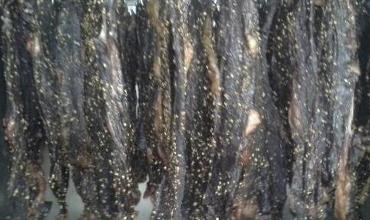Origin of Biltong
The Dutch settlers who arrived by boat in Southern Africa in the 17th century were faced with the problem of preserving a large mass of meat, in a short time and in a hot climate, during a period of history before electricity and refrigerators had been invented. The need for preservation in the new colony was pressing.
Biltong as we understand it today, involved applying vinegar, then
rubbing the strips of meat with a mix of herbs, salts and spices. By hanging the
raw meat out to dry, it was preserved from decay and insects within a day or
two, and within a fortnight it had fully cured. Now the wagon-travelling Dutch settlers had
stocks of durable food as they migrated into the interior of Southern Africa.
Nowadays, Biltong is hung in dehydrators to keep the process more manageable.

